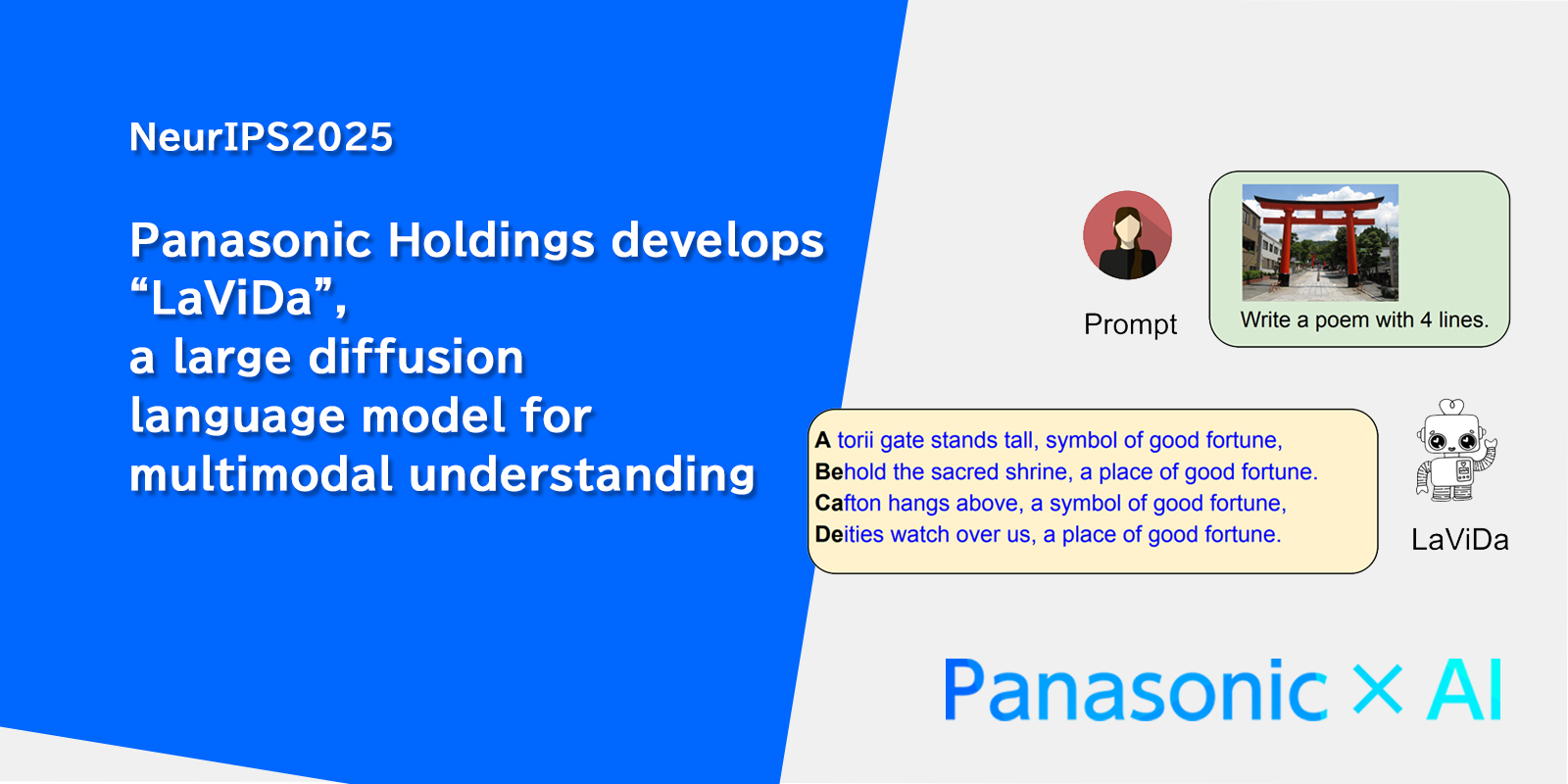
Nov 27, 2025
- Company
- Press Releases
- AI & Robotics
Sep 25, 2024
Company / Press Releases
Effects on bacteria in a space of approx. 25 m3

[Figure 1. Amount of bacteria adhered (group A streptococci) by time elapsed]
Osaka, Japan – Panasonic Corporation (https://www.panasonic.com/global/home.html) today announced that its Heating & Ventilation A/C Company (hereinafter referred to as Panasonic) verified that the active chloride component volatilized from the hypochlorous acid solution, produced by electrolysis of salt water, effectively eliminates over 99% of group A streptococci (GAS) adhered in a space of approx. 25 m3 within 60 minutes(*2).
The hypochlorous acid solution is produced through the electrolysis of salt water and demonstrates high efficacy in sterilization and deodorization. Since adopting the hypochlorous acid solution for the hygiene maintenance system of cup-dispensing vending machines in 1987(*3), Panasonic has been researching hypochlorous acid technology for over 30 years. The company verified in the past few years that the solution is effective in suppressing viruses, including the influenza virus (H1N1), novel coronavirus (SARS-CoV-2) Omicron variant, and enterovirus and coxsackievirus, which can cause hand-foot-and-mouth disease, as well as herpangina.
GAS is mainly transmitted via droplet infection (coughing and sneezing) and direct contact. These bacteria can cause a wide range of infections, such as strep throat and skin infections, and in severe cases, necrotizing fasciitis. Specifically, they are responsible for group A streptococcal pharyngitis, which primarily affects children with symptoms such as fever, sore throat, reddened tongue, and a red rash on the body. It can also cause sepsis and multiple organ failure, as exemplified by the streptococcal toxic shock syndrome, which has shown an increasing trend in recent years.
Based on the current verification results, the active chloride component volatilized from the hypochlorous acid solution is expected to eliminate GAS adhered to tables, railings, and other objects.
■Verification method
Two cases were verified: one by soaking the rotary sterilization filter in a hypochlorous acid solution of approx. 100 mg/L, exposing the filter to a given amount of wind (3.8 m3/min) to volatilize the active chloride component, and then exposing the specimens with GAS to the volatilized substance; and the other by not exposing the specimens to the active chloride component (natural attenuation).
■Verification results
The effect of suppressing 99% of GAS within 60 minutes was confirmed (Figure 1).
*1: Solution made by electrolysis of salt water
*2: These verifications were conducted for basic research purposes and did not involve any products containing the hypochlorous acid solution.
*3: Including the SANYO Electric era

|
Target |
Verification method |
Verification body |
Year of verification |
|---|---|---|---|
|
Influenza A virus |
Contact with gases |
Kitasato Research Center for Environmental Science |
2015 |
|
Feline calicivirus |
Contact with gases |
Kitasato Research Center for Environmental Science |
2015 |
|
Novel influenza virus |
Contact with gases |
Kitasato Research Center for Environmental Science |
2016 |
|
Rotavirus |
Contact with gases |
Kitasato Research Center for Environmental Science |
2016 |
|
Methicillin-resistant Staphylococcus aureus |
Contact with gases |
Kitasato Research Center for Environmental Science |
2016 |
|
Streptococcus pneumoniae |
Contact with gases |
Kitasato Research Center for Environmental Science |
2016 |
|
Measles virus |
Contact with gases |
Kitasato Research Center for Environmental Science |
2019 |
|
Adenovirus |
Contact with gases |
Kitasato Research Center for Environmental Science |
2019 |
|
Enterovirus |
Contact with gases |
Kitasato Research Center for Environmental Science |
2020 |
|
Coxsackievirus |
Contact with gases |
Kitasato Research Center for Environmental Science |
2020 |
|
Penicillium (spore) |
Contact with gases |
Kitasato Research Center for Environmental Science |
2020 |
|
Aspergillus niger (spore) |
Contact with gases |
Kitasato Research Center for Environmental Science |
2020 |
|
Moraxella |
Contact with gases |
Kitasato Research Center for Environmental Science |
2021 |
|
Micrococcus |
Contact with gases |
Kitasato Research Center for Environmental Science |
2021 |
|
Novel coronavirus (SARS-CoV-2) Omicron variant |
Contact with gases |
Shokukanken, Inc. |
2023 |
|
Novel coronavirus (SARS-CoV-2) Omicron variant |
Contact with solutions |
Shokukanken, Inc. |
2023 |
|
Influenza virus |
Contact with solutions |
Shokukanken, Inc. |
2023 |
|
Group A streptococcus |
Contact with gases |
Kitasato Research Center for Environmental Science |
2024 |
| About Panasonic Corporation
Panasonic Corporation offers products and services for a variety of living environments, ranging from homes to stores to offices and cities. There are five businesses at the core of Panasonic Corporation: Living Appliances and Solutions Company, Heating & Ventilation A/C Company, Cold Chain Solutions Company, Electric Works Company and China and Northeast Asia Company. The operating company reported consolidated net sales of 3,494.4 billion yen for the year ended March 31, 2024. Panasonic Corporation is committed to fulfilling the mission of Life Tech & Ideas: For the wellbeing of people, society and the planet, and embraces the vision of becoming the best partner of your life with human-centric technology and innovation. Learn more about Panasonic: https://www.panasonic.com/global/about/ |
The content in this website is accurate at the time of publication but may be subject to change without notice.
Please note therefore that these documents may not always contain the most up-to-date information.
Please note that German, Spanish and Chinese versions are machine translations, so the quality and accuracy may vary.